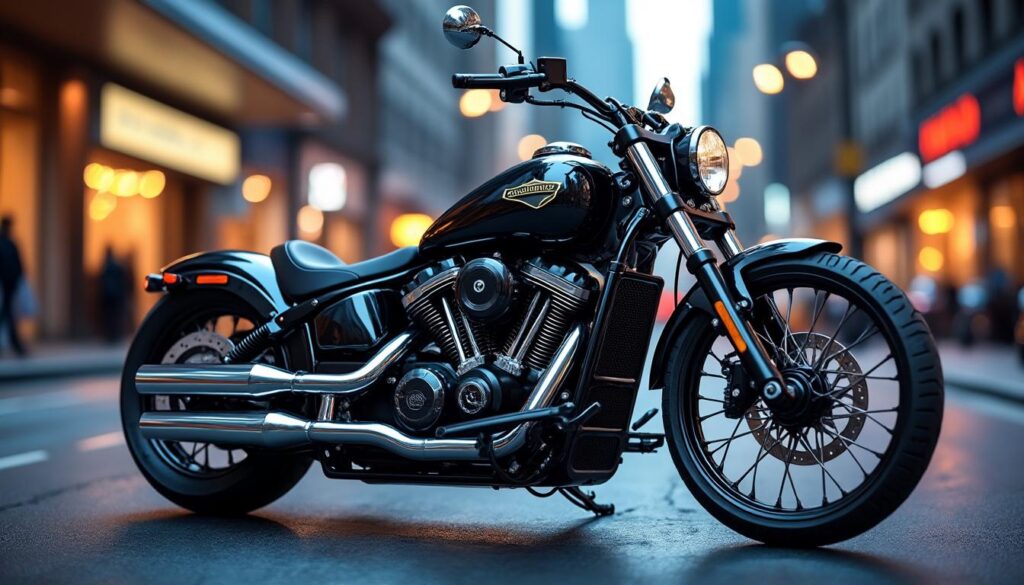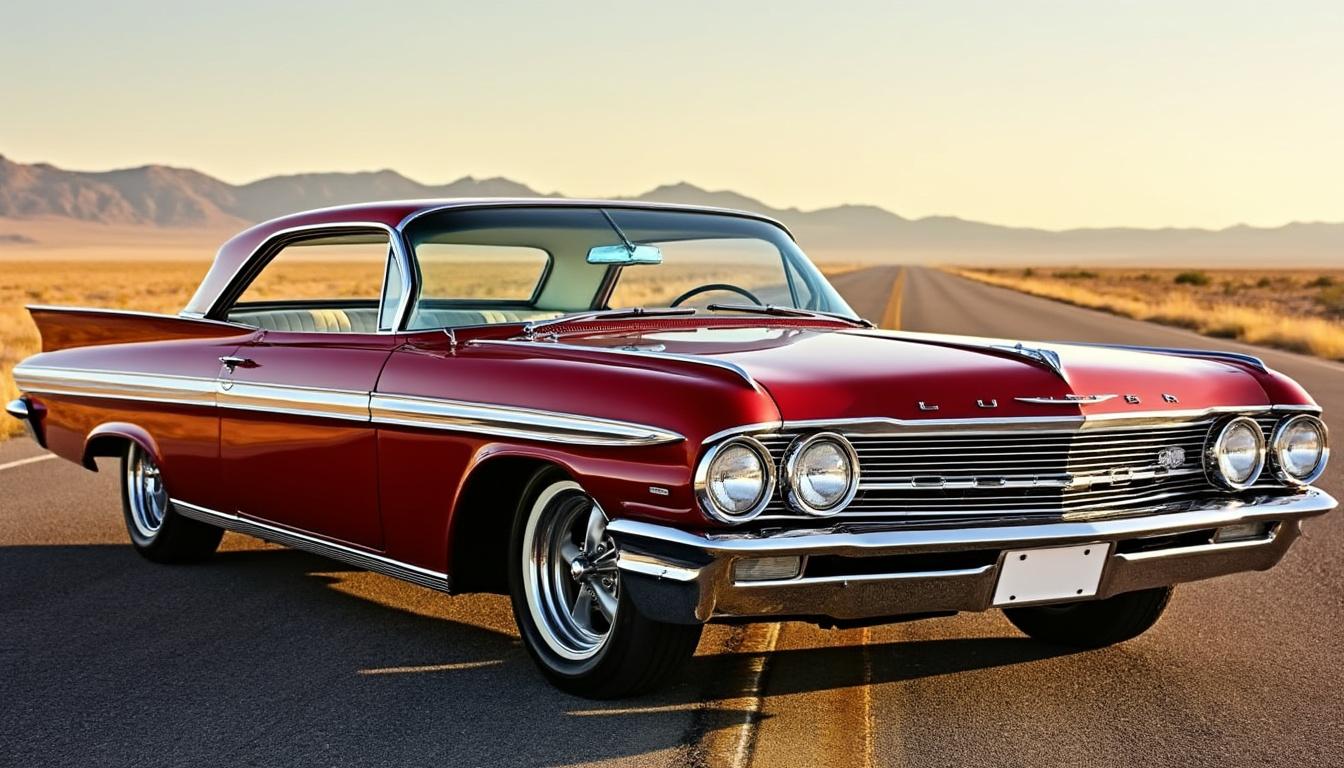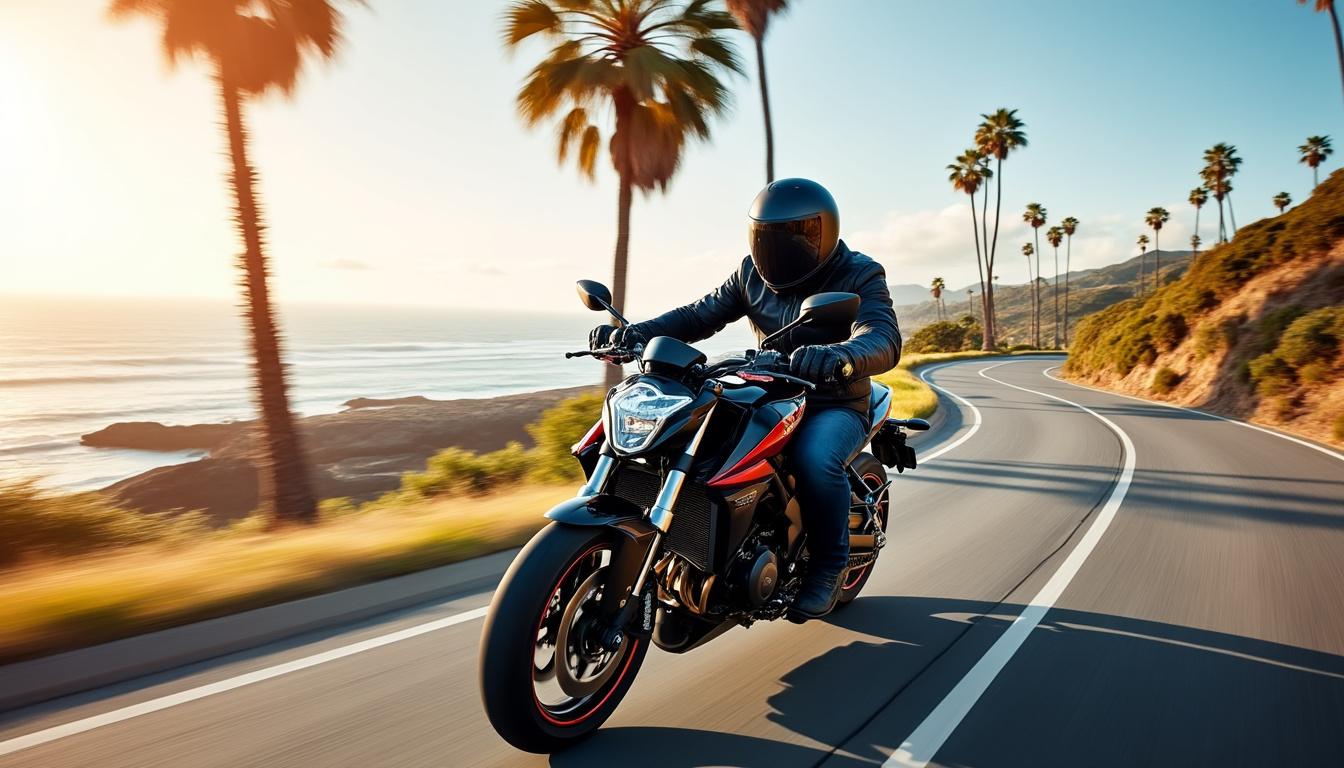Discover the cruiser equipped with a semi-automatic transmission

In the dynamic world of motorcycles, innovation continues to surprise. The new generations of cruisers, such as the Benda Rock 707, embody a fascinating evolution in the industry. Equipped with a semi-automatic transmission, this motorcycle heralds a new era of comfort and performance for two-wheel enthusiasts. Indeed, those who crave sensations on two wheels are now looking for vehicles that combine design, technology, and riding pleasure. The Rock 707, with its enticing technical features, promises a smooth ride, even for beginners. The growing interest in this type of motorcycle reflects a shift in consumer expectations in a market that is increasingly competitive, dominated by historic brands like Harley-Davidson, Honda, and Yamaha. New solutions, such as Honda's E-Clutch or BMW Motorrad's technology, highlight the importance of automation in the riding experience. Let us explore together this technological revolution that could redefine cruising.
A technological overview of the semi-automatic transmission
The technological advancement of semi-automatic transmissions paves the way for unprecedented riding experiences. The semi-automatic transmission system allows riders to change gears without manually operating a clutch, significantly simplifying riding. Manufacturers are leveraging this development to attract new motorcycle enthusiasts and breathe new life into classic models. By integrating semi-automated functions into cruisers, brands like Benda are positioning themselves in a fast-growing segment.

The components of a semi-automatic system
A semi-automatic transmission system generally consists of several key elements:
- Semi-automatic clutch: This system allows for smooth gear changes without the rider needing to use a clutch lever. For example, Honda's E-Clutch has demonstrated the effectiveness of this technology in sport motorcycles.
- Electronic control system: This type of system uses sensors to regulate gear changes, which can enhance the motorcycle's overall performance.
- Pneumatic suspensions: Benda, with the Rock 707, has introduced pneumatic suspensions, allowing the rider to adjust the motorcycle based on road conditions.
These components form an integrated system that enhances both the riding feel and overall control of the motorcycle. This riding comfort proves very beneficial on long journeys, especially for less experienced riders. Thus, this type of technology allows riders to focus more on the road and less on complex gear-changing maneuvers, leading to a more enjoyable experience.
Comparison of transmission technologies among key manufacturers
To better understand the impact of semi-automatic transmissions, it is necessary to compare the approaches adopted by various manufacturers in the industry. Here is a comparative table of the main innovations:
| Brand | Model | Transmission Type | Key Features |
|---|---|---|---|
| Benda | Rock 707 | Semi-automatic | Semi-automatic clutch, pneumatic suspensions |
| Honda | VFR800 | Semi-automatic | E-Clutch, cruise control |
| BMW Motorrad | R1250RT | Automatic | Intelligent gear shifting system |
| Ducati | Panigale V4 | Automatic | Quick shift system |
This table illustrates how brands enrich their offerings with features that set them apart. The emergence of the Rock 707 among competitors intensifies the desire of other manufacturers to innovate. It is interesting to analyze how companies, including major names like Yamaha, Kawasaki, and Triumph, will respond to this new trend. One can envision a race for innovation taking shape, aimed at capturing the interest of an increasingly demanding clientele.
The advantages of semi-automatic transmission for motorcyclists
The semi-automatic transmission is not just a simple technological alternative. It truly revolutionizes the riding experience and provides concrete benefits to motorcyclists. First of all, it reduces the stress associated with gear-changing maneuvers, making it an ideal option for beginners. Additionally, it improves comfort by allowing focus on riding. Users report less fatigue on long journeys, whether on highways or in urban environments. Advanced features, such as cruise control on some models, also help optimize fuel consumption.

Simplification of riding
The simplification of riding is one of the main advantages of this technology. Motorcyclists can focus on the road, increasing their responsiveness to unforeseen events. The benefits are measurable in several aspects:
- Less fatigue: The development of hand and arm muscles is limited, reducing the risk of cramps during a long ride.
- Driving ability: New riders feel more confident due to the ease of maneuvers.
- Improved performance: Optimized gear changes can also increase power and responsiveness, making riding more engaging.
These points highlight how the semi-automatic transmission contributes to an enriching experience for all motorcyclists, regardless of their skill levels. One may wonder if this technology will be integrated into all models in the future. Could major brands reinvent themselves around these innovations to capture the attention of motorcyclists?
Impact on road safety
Another crucial aspect that this technology brings is the improvement of safety. By making riding more intuitive, motorcyclists can better anticipate emergency situations. Indeed, returning a rider's hand with more safety is a laudable goal in an industry where accidents are frequent. The reduction of erroneous actions during gear changes also contributes to a smoother and safer ride.
A turning point for the motorcycle industry
In today's motorcycle landscape, the observed changes are not limited to technology but represent a true revolution in how motorcyclists perceive their experience. Legendary brands like Harley-Davidson, Yamaha, Kawasaki, as well as European giants such as Ducati and BMW Motorrad, are already reacting to the emergence of models like Benda's Rock 707. They are seeking to incorporate similar technologies to remain relevant.
The challenges of technological integration
Although the integration of advanced technologies presents a number of challenges, it opens the door to market opportunities. For meticulous riders, it is often crucial to offer not only high-performance motorcycles but also models that meet growing societal expectations. We see a clear interest in these aspects, which align with a demand for automation. Experiments are needed to ensure reliability, safety, and customer satisfaction.
A promising future for cruisers
The motorcycles of tomorrow, like the Benda Rock 707, are a taste of the changes to come. The market is moving towards models that combine innovation and design, attracting a diverse clientele. The offering of cruiser motorcycles with semi-automatic transmission could encourage a radical shift in motorcyclist behaviors, making riding more accessible and demystifying the world of motorcycles for a new audience. Historic brands such as Indian Motorcycle and Moto Guzzi may find themselves in a position of intense competition, requiring rapid adaptation to these new trends.
Consumer expectations and the future of semi-automatic transmission
With increasing awareness of road safety and the demand for more accessible options, the rise of semi-automatic transmissions could well become a standard in the motorcycle industry. Consumers in 2025 will be looking for stress-free riding experiences that align with more dynamic lifestyles. Brands like Triumph and Suzuki must therefore evolve quickly to capture this new clientele.
Consume less and ride more
Another consequence of this technology is the potential for better fuel consumption, which is particularly attractive for new riders concerned about their environmental footprint. With optimized transmission systems, motorcycles could indeed offer better energy efficiency, encouraging even more people to opt for two-wheeled vehicles over cars. This could also help ease congested roads while aligning with current environmental concerns.
Trends to watch
With a promising future in the cruiser market, trends to watch include:
- Constant innovations: new transmission systems are already in development, promising even more comfort and ergonomics.
- The importance of data: digitization could integrate software to collect data on driver behavior.
- Connectivity: motorcycles could offer increased connectivity, enhancing the interaction between the rider and the machine.
These trends illustrate how the industry is rapidly evolving. The cruiser with a semi-automatic transmission may just be the beginning, with delightful new revelations to come.
Source: www.lerepairedesmotards.com
Leave a Reply


Articles relatifs